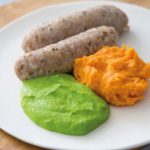Protein does a lot more than just fuel muscles, it is essential for many other aspects of our health. We use it for building and maintaining muscle mass, for producing hormones and even as a source of energy. If we don’t have enough protein, our organs are not going to work properly. Unfortunately, our bodies cannot easily store protein, which is why we need to get it from our diet every day.
Protein-rich food and drink
We can either get protein from animal-based sources like milk, cheese, yoghurt, eggs, fish, poultry and meat, or plant-based sources like seeds, nuts, beans, legumes, grains and cereals.
Protein needs are higher in our residents
For younger adults under 65, most of us overestimate how much we need and we usually eat more protein than the requirement. Younger adults need about 0.8 grams of protein per kilogram of body weight each day. But for older people above 65, their requirements are higher due to the natural decline in strength and muscle mass.
This decline in muscle mass and strength is called sarcopenia. It is primarily due to age but can also be exacerbated by illness, poor diet and lack of activity.
Recommended protein intake for our residents
Current research states that people over 65 who either have chronic disease, are malnourished, or are at risk of becoming malnourished should aim for a daily protein intake of 1.2 to 1.5 grams of protein per kilogram of body weight.(1) That’s actually a lot! For someone who weighs 70kgs, they would need 105g of protein each day.
This is what a diet would look like with 105g of protein (grams of protein are in the brackets):
Breakfast
1 cup of milk in cereal (10g)
200g of yoghurt (12g)
Lunch
100g of beef (33g)
Dinner
50g chickpeas in soup (3g)
100g of chicken (30g)
Supper
Cheese slice in sandwich (5g)
200mls Milo with milk (10g)
The example diet above reflects another research-backed recommendation, which is to provide 25 – 30g protein per main meal to promote muscle building and fuel muscles.(2)
Encouraging our residents to eat enough protein
Bearing in mind that some residents might opt for a smaller meal and end up having less than 100g meat, we would need to think about other ways to add protein to meals, desserts and soups without increasing the amount of foods on their plate.
We would also need to brainstorm ways outside of the main meals to help our residents hit their target protein intake outside of main meals, especially if they prefer grazing and snacking throughout the day.
The example diet also shows us that the most common protein sources are dairy products and meat. What about residents who are intolerant or dislike dairy and meat? Are we consciously making swaps that ensure they are still getting the protein they need from their meals?
Protein is an important nutrient to focus on as we age, so remember:
- Focus on creating meals and snacks around protein-rich foods and drinks
- Think about ways to increase the protein in main meals without increasing the food amount, such as using fortification
- Make sure every resident, even those that dislike or are intolerant to dairy and meat, can meet their daily protein target from their diet



